Capítulo 2: El Origen De Un País Y Su Prehistoria, Un Paseo Por La Historia Del País Del Sol Naciente.


Capítulo 2: El origen de un país y su prehistoria, un paseo por la historia del país del sol naciente. El Pleistoceno Sean bienvenidos, a una nueva serie, de arqueología prehistórica en esta ocasión, nos trasladamos al país del sol naciente. En el capítulo anterior, estuvimos dando una pequeña introducción, de la prehistoria nipona, ha llegado la hora de matizar más en profundidad cada apartado.
-
En este capítulo, nos vamos a centrar en el pleistoceno, para entender la evolución meteremos, algunos contextos del mundo para que puedan ir comprendiendo el pleistoceno japonés del resto del mundo. La prehistoria humana comienza hace unos 2,5 a 7 millones de años aproximadamente, los primeros homínidos, salieron de África, Como son el caso de: Homo neanderthalensis, Homo heidelbergensis, Homo ergaster entre otros homínidos.
-
Sabemos que los primeros homínidos, que salieron de la cuna de áfrica, fueron los homo habilis y erectus los cuales se fueron desplazando por los distintos continentes, pasando primero por la zona de la península del Sinaí y luego pasaron por el corredor siro palestino.
-
En el capítulo anterior, salió la pregunta¿Cómo llegaron los primeros homínidos al archipiélago? Llegaron hace unos 30.000 a 90.000 aproximadamente, han salido recientes estudios arqueológicos, en respecto a esta parte, la cual ya os la comentaré en una noticia arqueológica, ¿De qué medio disponían?, probablemente, a través de canoas o balsas llegando así a la zona de Okinawa, ¿Quiénes habitaban Japón cuando ellos llegaron?, pues los Ainu, ¿cuándo llegaron?, aproximadamente hace unos 110.000 y 10.000 años antes de cristo.
-
Este capítulo lo vamos a tener que ir dividiendo en partes para irlo trabajando poco a poco. Espero que os haya gustado y nos vemos en el siguiente capítulo. Un fuerte abrazo.
More Posts from Noticiasarquelogicasjaponesas and Others
Capítulo 4: El origen de un país y su prehistoria, un paseo por la historia del país del sol naciente. - El Pleistoceno: ¿Cómo era el clima en el pleistoceno a través de los registros? Los testigos geológicos y los foraminíferos que nos permiten saber cómo era el clima en aquella época, en Japón era muy húmedo y muy frío, hay que tener en cuenta que las temperaturas actuales no son las mismas que hace 1.2 millones de años. ¿Es verdad, que los humanos en el pleistoceno extinguieron a mucha megafauna? Lo cual es una verdad a medias, ya que el ser humano fue una de las muchas causas, por el hecho de que como las temperaturas fueron uno de los factores claves en sus extinciones, por el hecho de que si una especie necesita de determinada para sobrevivir y el ser humano y el clima acaban con ella, pues, hay tenemos el golpe de gracia. Se sabe que en Hokkaido había Mamuts. El territorio Nippo, estaba unido al continente chino y correano en la zona sur por el estrecho de Tsushima o también denominado Paleo - Honshu y al norte por la isla de Sanjin. Como veíamos en el capítulo anterior, ¿Cómo se llaman las placas tectónicas que forman el archipiélago? Está compuesta por cuatro, Placa del Pasifico, EuroAsiática y NorteAmericana. Esto jugará, un papel fundamental, en la conformación del archipiélago japonés. Como ya mencione en el capítulo 3, posiblemente serían un conjunto de pequeñas islas que se fueron cambiando hasta conformar lo que vemos actualmente como Japón. - Mientras unas se indican, otras emergen y así a la inversa, esto deja registros geológicos. Algunas prefecturas donde se han encontrado restos humanos: prefecturas de Hyogo Shizuoka. - Chapter 4: The origin of a country and its prehistory, a walk through the history of the country of the rising sun. - The Pleistocene: What was the climate like in the Pleistocene across records? The geological witnesses and foraminifera that allow us to know what the climate was like at that time, in Japan it was very humid and very cold, we must take into account that current temperatures are not the same as 1.2 million years ago. Is it true that humans in the Pleistocene extinct many megafauna? Which is a half truth, since the human being was one of the many causes, due to the fact that since temperatures were one of the key factors in their extinctions, due to the fact that if a species needs a certain amount to survive and the human being and the climate put an end to it, well, there we have the coup de grace. It is known that there were Mammoths in Hokkaido. The Nippo territory was joined to the Chinese and Correan continent in the south by the Strait of Tsushima or also called Paleo-Honshu and to the north by the island of Sanjin. - As we saw in the previous chapter, what are the names of the tectonic plates that form the archipelago? It is made up of four, Pacific, Euro-Asian and North American Plates. This will play a fundamental role in the formation of the Japanese archipelago. As I already mentioned in chapter 3, they were possibly a set of small islands that changed until they formed what we currently see as Japan. While some are indicated, others emerge and so on, this leaves geological records. Some prefectures where human remains have been found: Hyogo Shizuoka prefectures. - 第4章 国の成り立ちと先史、日出ずる国の歴史を歩く。 - 更新世: 記録に残る更新世の気候はどのようなものでしたか? 地質学的証拠と有孔虫は、当時の日本がどのような気候であったかを知ることを可能にします。日本は非常に湿気が多く、非常に寒かったため、現在の気温は 120 万年前と同じではないことを考慮する必要があります。 更新世の人類が多くの巨大動物を絶滅させたというのは本当ですか? これは半分真実です。なぜなら、温度が絶滅の重要な要因の1つであるという事実、そして種が生き残るためにある程度の量が必要であるという事実のため、人間は多くの原因の1つであるからです。人間と気候がそれに終止符を打ったのです。まあ、ここで私たちは幸運をもたらしました。 北海道にはマンモスがいたことが知られています。 日豊領土は、南は対馬海峡、または古本州とも呼ばれ、北は三津島によって中国大陸とコレリア大陸につながっていました。 - 前の章で見たように、列島を形成する構造プレートの名前は何ですか? 太平洋プレート、ヨーロッパ・アジアプレート、北米プレートの4枚で構成されています。 それは日本列島の形成に根本的な役割を果たします。 第 3 章ですでに述べたように、それらはおそらく、私たちが現在日本として見ているものを形成するまでに変化した小さな島の集まりであった可能性があります。 示されているものもあれば、出現しているものもあり、これにより地質学的記録が残ります。 人骨が発見された都道府県: 兵庫県 静岡県。 -


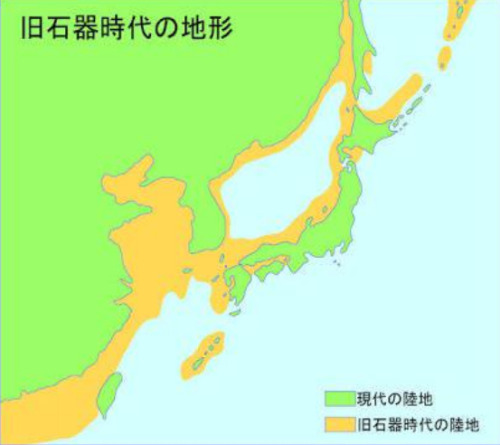

Hace 2 años que empecé con esta cuenta y con el blog. Me alegra mucho, la acogida que está teniendo y el apoyo que le están dando muchas gracias, os espero en las próximas publicaciones que pasasen una buena Navidad y felices fiestas. - このアカウントとブログを始めて2年が経ちました。皆様からの反響とサポートにとても満足しています。次回の出版で楽しいクリスマスと楽しい休暇をお過ごしいただければ幸いです。 - I started this account and blog 2 years ago. I am very happy with the reception it is having and the support it is receiving. Thank you very much. I hope to see you in the next posts. I hope you had a good Christmas and happy holidays.
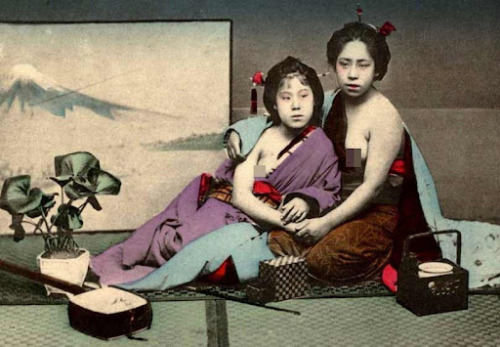
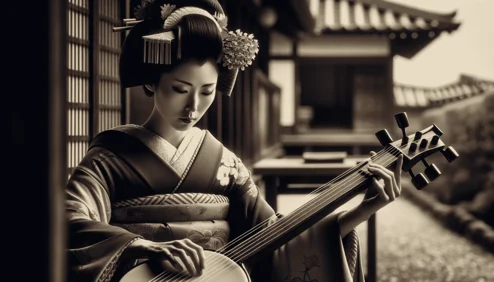
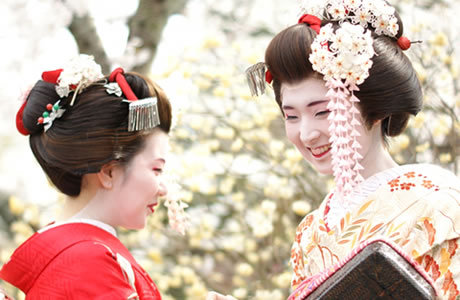


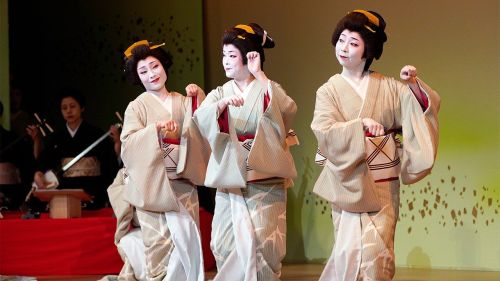

Hace unos meses, ha tenido lugar en el país del sol naciente en uno de los distritos más populares de Kyoto, por el que transcurren las geishas a pesar de los avisos que se han hecho respecto al tema, como: El no hacer fotos o vídeos, la gente ha pesado de los avisos que se han hecho. - Parece ser que hay personas que se lo han pasado por donde les ha dado la gana hay gente que ha llegado a tirarle de la ropa, además de perseguirlas cuando se iban a meter en el taxi y un largo etcétera a día de hoy desde este pasado mes de abril, pues, no se puede entrar a no ser que entres y pagues una multa lo cual me parece bien y también me parece bien como sistema para controlar el exceso de turismo. - ¿Qué opinan ustedes? Os leo en comentarios. - A few months ago, it took place in the land of the rising sun in one of the most popular districts of Kyoto, where geishas hang out despite the warnings that have been made regarding the subject, such as: Do not take photos or videos , people have weighed the warnings that have been made. - It seems that there are people who have had it wherever they wanted, there are people who have even pulled at their clothes, in addition to chasing them when they were about to get into the taxi and a long etcetera to this day from this past month of April, well, you cannot enter unless you enter and pay a fine, which seems fine to me and also seems fine to me as a system to control excess tourism. - What do you think? I read you in comments. - 数カ月前、日出ずる国の京都で、芸者衆が通る人気の繁華街で、こんなことがあった: 写真やビデオを撮らないよう、人々は警告を重く見た。 - 昨年4月の今日から、入場して罰金を払わない限り入場できないようになったが、これはこれでいいような気もするし、過剰な観光を抑制するシステムとしてもいいような気もする。 - どう思いますか?どう思いますか?






Sean bienvenidos japonistasarqueologicos, a una nueva entrega de arqueología nipona, en esta ocasión os enseñaré algunos objetos recuperados del yacimiento del toro, entre otros — Los bienes muebles: son todos aquellos materiales que están hechos de madera y hueso que rara vez se conservan, a no ser que se den las condiciones óptimas como es en este caso. Pondré en un orden sucesivo las fotos de los objetos de antes de ser restaurados y una vez ya restaurados, para esta labor se ha tardado 14 años desde 2018-2021.
— Espero que os haya gustado y nos vemos en próximas publicaciones, que pasen una buena semana. - ようこそ、ジャポニスタサルケオロジコスの日本考古学の新しい回へ、この機会に私はあなたに、とりわけ、雄牛のサイトから回収されたいくつかのオブジェクトを表示します。 - 可動遺物:木や骨で作られたもので、今回のように最適な条件でない限り、保存されることはほとんどない。2018年から2021年までの14年間を費やしたこの作業のために、修復される前と、すでに修復されたものの写真を順を追って並べます。
- お気に召していただけたなら幸いである。 - Welcome japonistasarqueologicos, to a new installment of Japanese archaeology, on this occasion I will show you some objects recovered from the site of the bull, among others - Movable goods: these are all those materials made of wood and bone that are rarely preserved, unless the conditions are optimal as in this case. I will put in a successive order the photos of the objects before being restored and once already restored, for this work it has taken 14 years from 2018-2021.
- I hope you liked it and see you in future publications, have a good week.
More information: https://www.shizuoka-toromuseum.jp/zhcn/

Sean bienvenidos japonistaarqueológicos a una nueva entrega de arqueológica japonesa dicho esto pónganse cómodos que empezamos. En esta ocasión, nos trasladamos a las ruinas de Saigu que están localizadas en la prefectura de Mie además es un sitio histórico nacional en Meiwa-cho, en el cual vivió Saio, la princesa que sirvió a Ise Jingu en lugar del emperador. - Esto lo sabemos gracias a los restos arqueológicos se, cree que se construyó entre el período Nara tardío y el período Heian temprano, se componen de cuatro edificios. - Estén atentos ya que les iré informando de todo lo que se vaya sabiendo,¿ Conocían este lugar? Espero que os haya gustado y nos vemos el día 22 nuevamente, os deseo un cordial saludo. - 日本の考古学の新しい記事へようこそ。 今回は、伊勢神宮に仕えた皇女・斎王が住んでいた、三重県明和町にある国の史跡「斎宮跡」に移動しました。 - 考古学的遺跡のおかげで、奈良時代後期から平安時代初期に建てられたと信じられており、4つの建物で構成されています。 - わかっていることはすべてお知らせしますので、お楽しみに、このサイトをご存知でしたか? 気に入っていただけて、22日にまたお会いできることを願っています。 - Welcome japonistasarqueológicos to a new installment of Japanese archeology, having said that, make yourself comfortable, we're starting. This time, we moved to the Saigu Ruins, which is located in Mie Prefecture and is a national historic site in Meiwa-cho, where Saio, the princess who served Ise Jingu instead of the emperor, lived. - We know this thanks to the archaeological remains, I know, it is believed that it was built between the late Nara period and the early Heian period, it is made up of four buildings. - Stay tuned, since I will inform you of everything that is known, did you know this site? I hope you liked it and see you again on the 22nd, I wish you a cordial greeting.


Sean bienvenidos, japonistasarqueológicos a una nueva entrega, de arqueología en la que comentaremos, cómo era vivir hace 2000 años en el período Yayoi, una vez dicho esto pónganse cómodos que empezamos. — En el emplazamiento, podréis vivir la experiencia de como si estuvierais en las viviendas, de dicho periodo, las recreaciones de los almacenes y los santuarios de las ruinas de toro se han reducido a una escala de aproximada al 80 % las paredes representan la naturaleza, de la época y de su estilo de vida. Siéntete como si hubieras viajado en el tiempo al pueblo Toro del período Yayoi, con nuestra máquina del tiempo, ya que puede ser una experiencia inolvidable, para todas las edades, porque la vida no ha cambiado en 2000 a 3000 años. — Espero que os guste y nos vemos en próximas publicaciones, que pasen una buena semana.
-
日本の考古学者諸君、ようこそ考古学の新連載へ。2000年前の弥生時代の暮らしとはどんなものだったのかについて語り合おう。 - 遺跡では、当時の住居がどのようなものであったかを体験することができます。トロ遺跡の倉庫や神社を約80%の縮尺で再現し、壁で当時の自然や生活様式を表現しています。まるでタイムマシンで弥生時代の登呂集落にタイムスリップしたかのような体験は、2000年から3000年経っても変わらない暮らしの中で、世代を問わず忘れられない思い出になることだろう。 - それでは、また次回もお楽しみに。
-
Welcome, Japanese archaeologists, to a new instalment of archaeology in which we will discuss what it was like to live 2000 years ago in the Yayoi period, so make yourselves comfortable and let's get started. - At the site, you can experience what it was like to live in the dwellings of that period, the recreations of the warehouses and shrines of the toro ruins have been reduced to a scale of about 80% and the walls represent the nature of the period and its lifestyle. Feel as if you have travelled back in time to the Toro village of the Yayoi period, with our time machine, as it can be an unforgettable experience, for all ages, because life has not changed in 2000 to 3000 years. - I hope you like it and see you in future publications, have a nice week.
詳しくは/more information:
https://www.shizuoka-toromuseum.jp/guide/admission/





Mausoleo Nikko Tosho-gu, construido en el siglo XVII por Iemitsu, sucesor de Tokugawa Ieyasu. Es un lugar compuesto por un horror vacui, horror al vacío, consta con un gran bestiario de animales con un alto lujo de detalles, es un lugar donde se ve, el máximo esplendor del arte tradicional japonés budista y sintoísta en una gran armonía. - Nikko Tosho-gu Mausoleum, built in the 17th century by Iemitsu, successor of Tokugawa Ieyasu. It is a place composed of a horror vacui, horror of emptiness, it consists of a large bestiary of animals with great detail, it is a place where you can see the maximum splendor of traditional Japanese Buddhist and Shinto art in great harmony. - 17世紀、徳川家康の後継者である家光によって建てられた日光東照宮。ホラーヴァクイ、空虚の恐怖で構成された場所であり、細部まで描き込まれた動物の大型獣戯画で構成され、日本の伝統的な仏教美術と神道美術が見事に調和した最大の素晴らしさを見ることができる場所である。 -





Banchō Sarayashiki, también conocida como okiku-san, en vida un aciago día, se le cayeron los 10 platos y por desgracia uno de ellos se rompió y su amo la asesinó y arrojó su cuerpo a un pozo.-Por eso cada noche aparece para contar los platos con una voz tenue, uno, dos, tres... así hasta nueve ¡Exclamando falta un plato! - La historia se remonta al periodo Edo. ¿Conocían esta pequeña historia? Que pasen una buena semana. - お菊さんこと皿屋敷番長は、ある運命の日に10枚の皿を落とし、運悪くそのうちの1枚が割れてしまい、主人に殺害されて井戸に投げ込まれました。 - そのため、毎晩、かすかな声で皿を数え、1枚、2枚、3枚...と9枚まで数え、「1枚足りない!」と叫ぶのだそうです。 - この話は江戸時代まで遡りますが、皆さんはご存知でしたか?それでは、今週も良い一週間をお過ごしください。 -Banchō Sarayashiki, also known as okiku-san, in life one fateful day, dropped the 10 plates and unfortunately one of them broke and her master murdered her and threw her body into a well. - That's why every night she appears to count the plates with a faint voice, one, two, three... up to nine... exclaiming that one plate is missing! - The story goes back to the Edo period. Did you know this little story? Have a nice week.


Sean bienvenidos a la última publicación del año hoy dia 31/12/2021 se come Toshikoshi soba, para despedir el año ¿Cuándo surgió ?y ¿por qué?. _ Ya durante el siglo V ya era bastante popular , se ha comido de formas distintas proviene del trigo sarraceno, se comía tal cual o se mezclaba con agua y luego se cocinaba lo más probable es que fuera introducido por china a través de Corea . - ¿Cómo se llamaba al plato popular del siglo V? soba-gaki y para beber soba-yu( este era más popular en el periodo edo para las enfermedades). El trigo sarraceno se hacía como unas albóndigas que después se comen hervidas, ¿Posible comida para ricos?. La soba como la conocemos data del periodo Edo hasta nuestros días siglo 16 año 1574 aproximadamente. - ¿Combinación con la temperatura? Se hizo popular por la misma época mencionada anteriormente, la soba tiene vitamina B1. - ¿Cocían este plato o su historia? espero que se lo pasen bien en la noche de nochevieja un cordial saludo. -
今日の最後の出版物へようこそ2021年12月31日大晦しそばが食べられて、今年に別れを告げます。それはいつ起こったのですか?そしてなぜですか? すでにV世紀の間にそれはすでに非常に人気があり、それはさまざまな方法で食べられました、それはそばから来ます、それはそのまま食べられるか、水と混合されてから調理されました、それは韓国を通して中国によって導入された可能性が高いです。 5世紀の人気料理は何と呼ばれていましたか? そばがきとそば湯を飲む(江戸時代は病気で人気がありました)。 そばはミートボールのように作られ、後で茹でて食べられます。 ご存知のそばは江戸時代から現在の16世紀、1574年頃までさかのぼります。 温度との組み合わせ? 上記と同時期に人気を博し、そばにはビタミンB1が含まれています。 彼らはこの料理またはその歴史を調理しましたか? 大晦日、心からのご挨拶をお楽しみください。 -
Welcome to the last publication of the year today 12/31/2021 Toshikoshi soba is eaten, to say goodbye to the year. When did it arise? And why ?. Already during the V century it was already quite popular, it has been eaten in different ways, it comes from buckwheat, it was eaten as it is or mixed with water and then cooked, it is most likely that it was introduced by China through Korea. What was the popular dish of the 5th century called? soba-gaki and to drink soba-yu (this was more popular in the Edo period for illnesses). Buckwheat was made like meatballs that are later eaten boiled. Possible food for the rich? Soba as we know it dates from the Edo period to the present day 16th century, approximately 1574. Combination with temperature? It became popular around the same time mentioned above, soba has vitamin B1. Did they cook this dish or its history? I hope you have a good time on New Years Eve, a cordial greeting.
-
 bear-pattern-hamster liked this · 1 year ago
bear-pattern-hamster liked this · 1 year ago -
 repera23 liked this · 1 year ago
repera23 liked this · 1 year ago -
 noticiasarquelogicasjaponesas reblogged this · 1 year ago
noticiasarquelogicasjaponesas reblogged this · 1 year ago -
 darth-puma-vader liked this · 1 year ago
darth-puma-vader liked this · 1 year ago -
 rodolfo9999 liked this · 1 year ago
rodolfo9999 liked this · 1 year ago -
 hiromusicarts-blog liked this · 1 year ago
hiromusicarts-blog liked this · 1 year ago -
 gens-venturia liked this · 1 year ago
gens-venturia liked this · 1 year ago -
 noticiasarquelogicasjaponesas reblogged this · 1 year ago
noticiasarquelogicasjaponesas reblogged this · 1 year ago -
 noticiasarquelogicasjaponesas reblogged this · 1 year ago
noticiasarquelogicasjaponesas reblogged this · 1 year ago -
 noticiasarquelogicasjaponesas reblogged this · 1 year ago
noticiasarquelogicasjaponesas reblogged this · 1 year ago

238 posts
